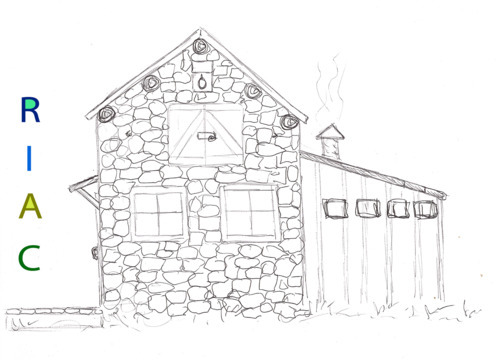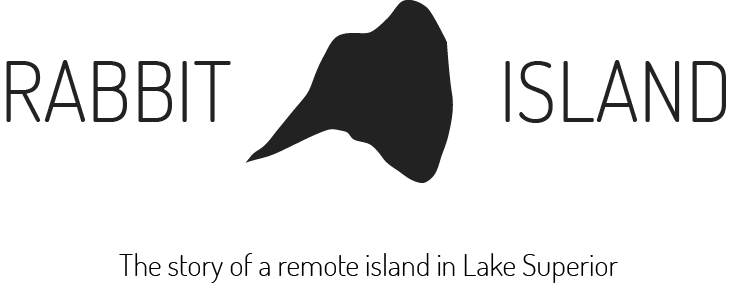
Rabbit Island Architecture Competition: A Rock and Wood Design Studio
Update: Winners
Introduction: Rabbit Island is a remote 91 acre forested island in Lake Superior three miles east of Michigan’s Keweenaw Peninsula. The island has never before been developed and is composed of a forested northern ecosystem standing upon sandstone bedrock. The varied shoreline is composed of fractured sandstone rubble which is suited for architectural application. The island’s ecologic integrity remains in its natural state and the environment hosts several species of birds including bald eagles, great blue herons and various nesting shorebirds. Rabbits inhabit the forest while the surrounding waters provide habitat for lake trout and salmon fisheries. The soil of the island has the potential to support gardening practices and Lake Superior water is fit for drinking. Though the island itself is privately owned the vast majority of the island’s development rights are held under conservation easement by the Keweenaw Land Trust assuring it’s ecosystem will remain healthy in perpetuity.
Theme: Design emphasis is to be placed on aesthetics, function, longevity, energy solutions and simplicity of construction technique. The finished results will allow visitors to enjoy consciously designed living and recreational spaces that facilitate interaction with the surrounding wilderness ecosystem. The solution in its entirety should be thoughtfully integrated aesthetically with the natural environment and consider all associated externalities. The theme is otherwise open. (The above sketch is not intended to influence design consideration whatsoever. The island’s existing rustic shelter should be considered temporary and is easily removable).
Discussion: The island that is itself a functional ecosystem. What ideas are fit to be built upon it? What have we learned from our historical design practices in the context of frontier? Where does the intersection of technology, construction, beauty and wilderness lie? What compromises are necessary?
Eligibility: The competition is opened to students and professionals. There is no age limit. The projects may be carried out by individuals or groups with no restriction to the number of members on the team.
Award: Winning designs will be published and winning designers will be considered for development of the project.
Submissions Due: March 31st, 2012
Budget: $50,000
Program: Architects are challenged to submit proposals for a collection of habitable structures sourced predominantly from site-specific materials. These may be augmented with well-curated products of the larger society:
+ Sandstone blocks from the shores of the island. Photo 1, 2, 3. Geological survey field notes here.
+ Timber products from the island’s forest. Timber stand details here. Diameter of cut trees for building would likely be 12 inches or less, windfalls excluded.
Location:
+ General building site location here. Existing shelter photos: 1, 2, 3. (This shelter may be considered temporary and can be removed as part of a submitted proposal. It may also be incorporated into a submitted proposal. Neither option is considered more preferable. It measures 11’ by 16’.)
+ Existing building site cross-section here.
Required general design elements:
+ Combined footprints of structures must not exceed 1,800 square feet or rise above two standard stories. There is no minimum size limitation.
+ Living space
+ Kitchen space
+ Sleeping space
+ Recreational structures (wilderness, watersports, food related, etc.)
+ Outbuilding(s) for supplies and storage
+ Studio space (woodwork, music, dance, writing, painting, etc.)
Materials:
Structures must incorporate the vernacular of the site including sandstone rocks and forest resources. Any other material may be used but in doing so practical consideration must be given to the remote island location and transportation via recreational boat.
Technical Consideration:
There is no connection to the electrical grid available. All energy utilized within proposals must be produced on site.
Other Design Considerations:
+ Energy system to provide modest electricity for limited refrigeration, lighting, and small appliances such as laptops, speakers, etc. (Any wind energy application must consider resident bird populations including bald eagles.)
+ Water reservoirs, pumping system, bathing facilities, gray water applications and waste system
+ Site preparation
+ Wood-fired cooking, bathing and heating/sauna applications
+ Boat access elements
+ Dock/Harbor design (if included)
+ Trail design and landscape architecture
+ Garden design expressing locavore philosophy
+ Sanitation facility
Climate: Winter seasons are harsh and involve high winds and significant snow load. Any structures intended to be submersed in Lake Superior (docks, etc.) must consider the multi-ton load of winter icebergs which impact the shoreline with abrasive force.
Limitations: The designs cannot negatively affect resident bald eagles, Great Blue Heron Rookery cycles or nesting shore bird colonies (which are located at the southwest point of the island). Designs must in general not detract from the existing ecosystem’s function and forest integrity.
Participants may submit the following:
+ Two 11" x 17" boards that graphically communicate the design proposed
+ Written discourse of the design theme and elements included in the submission
+ Electronic copies of board graphics (PDF or jpeg) acceptable
Jury: The competition will be juried by a panel of artists, designers, professors and practicing architects.
Further Info: Contact Rob Gorski at robgorski@gmail.com or 917.861.7757
*Many thanks to Monica Trejo, Chris Cornecelli of Herzog & de Meuron and Julia Neumann for competition guidance.
